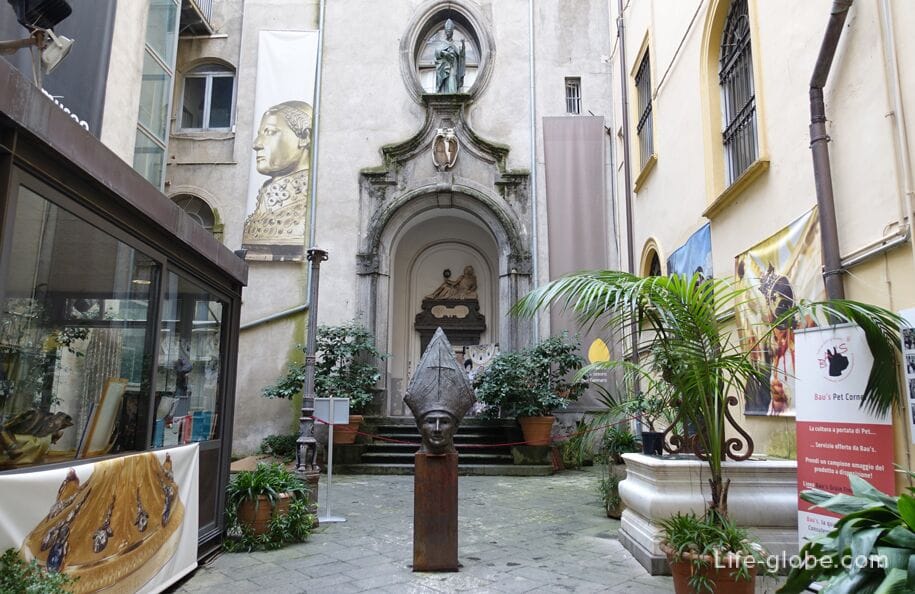
Cathedral of Naples, also known as the Cathedral of San Genarro or the Naples Cathedral (Duomo di Napoli, Cattedrale di San Gennaro), the modern name - the Cathedral of the assumption of St. Mary (Cattedrale di Santa Maria Assunta) is the main Church of Naples is a Roman Catholic Cathedral, consecrated in honor of the city's patron, St. Januarius.
Cathedral in the historic centre of the city on the same face of the Duomo (Via Duomo), close to the most famous tourist street of Naples, which is not on the cards - Spaccanapoli.
Duomo di Napoli was commissioned by king Charles I of Anjou. Construction continued during the reign of his successor Charles II, and was completed only in the early 14th century under Robert of Anjou. The temple was built on the Foundation of two Paleochristian basilicas, which can still be seen. Excavations under the building was discovered with Greek and Roman artefacts.
During its existence, the Cathedral has undergone repeated restructuring, restoration (renovation), resulting in the architecture of the Cathedral there are several styles: Gothic, Renaissance, Baroque and neo-Gothic. The last major reconstruction of the façade occurred at the end of the 19th century, it was then the Church acquired a neo-Gothic style.

Facade of the Cathedral of St. Januarius has a typical Gothic structure with three portals and three cusps. Decorated with marble sculptures in accordance with each of the three naves.

The inner space of the Cathedral has the shape of a Latin cross, consists of a main hall, divided into three naves with lateral chapels.
Three passes of the main hall are separated by a sequence of eight pillars on each side, which include Roman columns, which are based on pointed arches, decorated with stucco and marble.
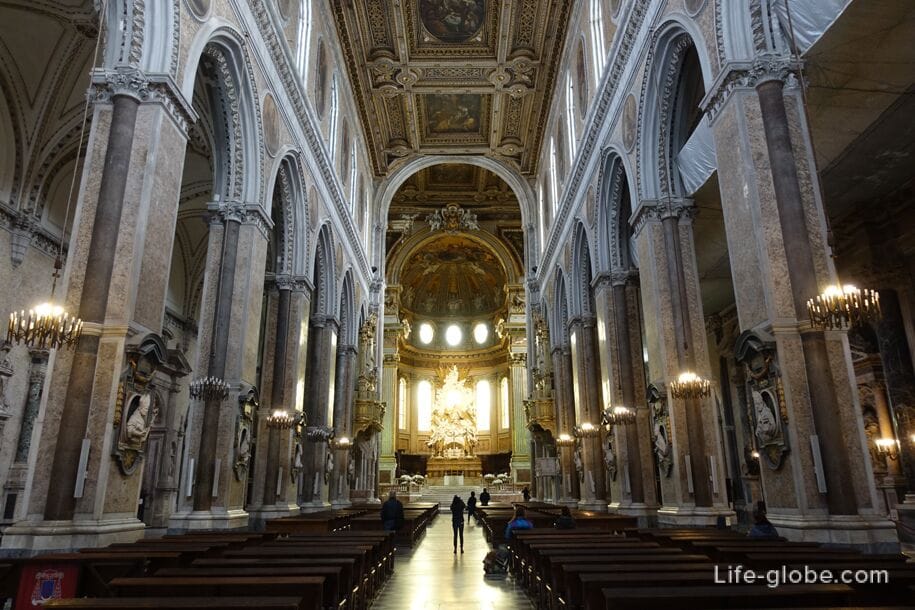
The ceiling of the main nave has a coffered form, decorated with gilt and five paintings (17th century).
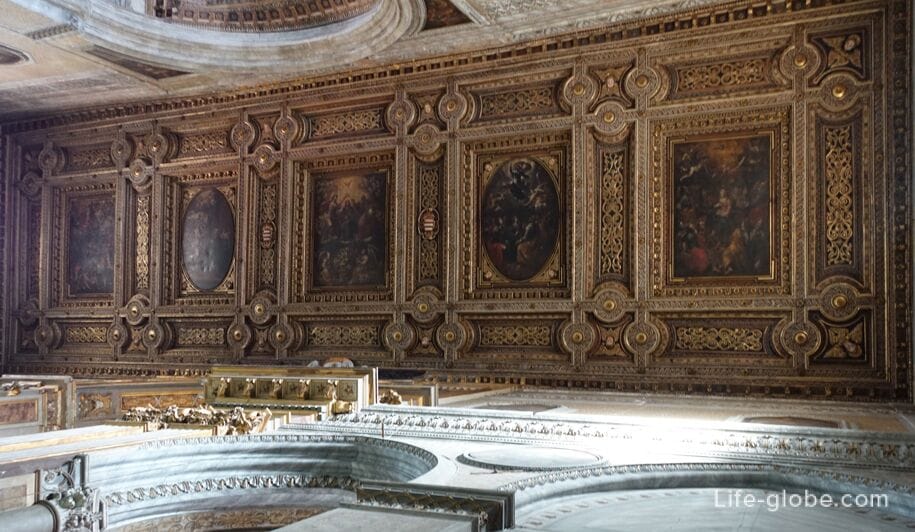
The apse in its current form is the result of changes of the 16th and the 18th centuries made in the original Gothic polygonal structure.
Around the perimeter of the apse of the wooden choir stalls. The sanctuary is on two levels and surrounded by balustrade, Baroque multicoloured marble. In the center is a modern main altar, consecrated 27 April 2012 and consisting of a block of white marble, decorated with bas-reliefs, on the front side, by an anonymous sculptor of the eighteenth century, depicts the resurrected Christ.
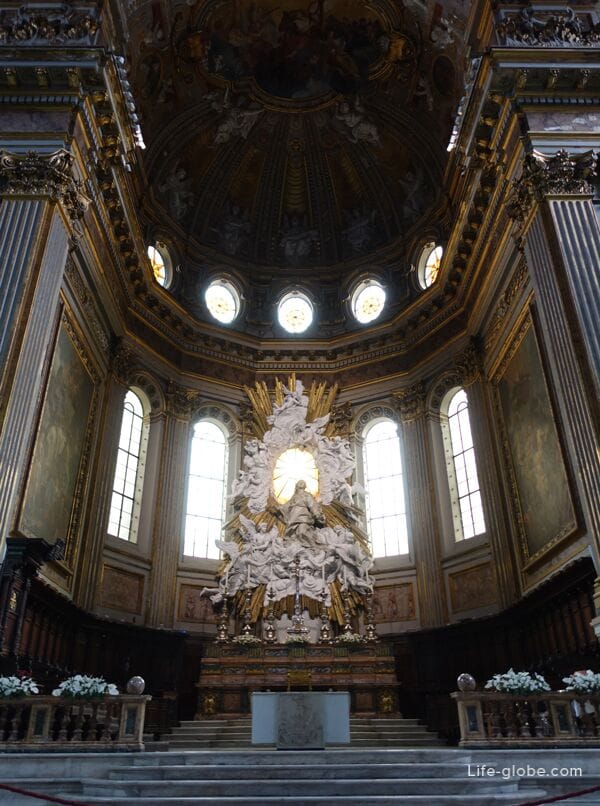
In the interior of the main Cathedral of Naples, you can see numerous murals, mosaics, on (original work 1767), and chapel, different time of construction.
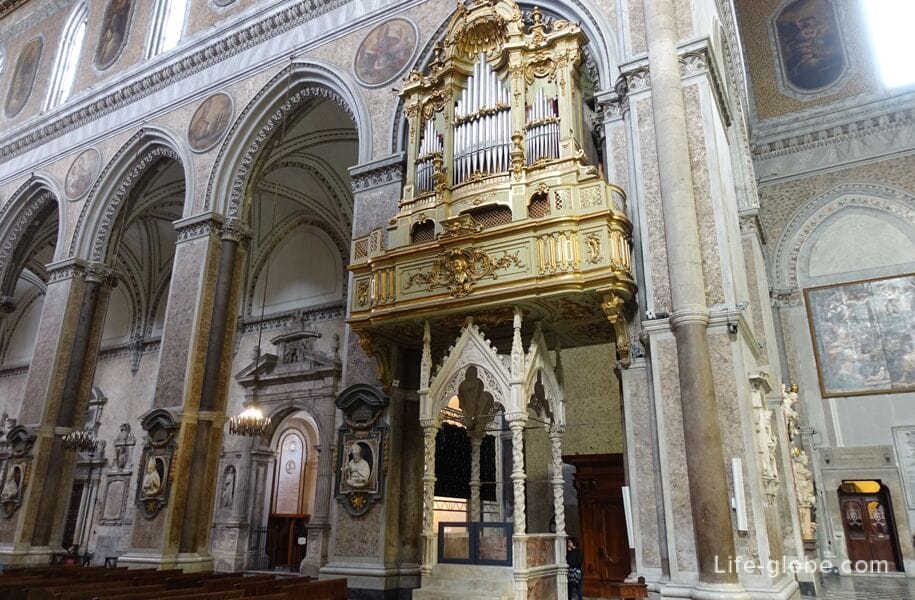
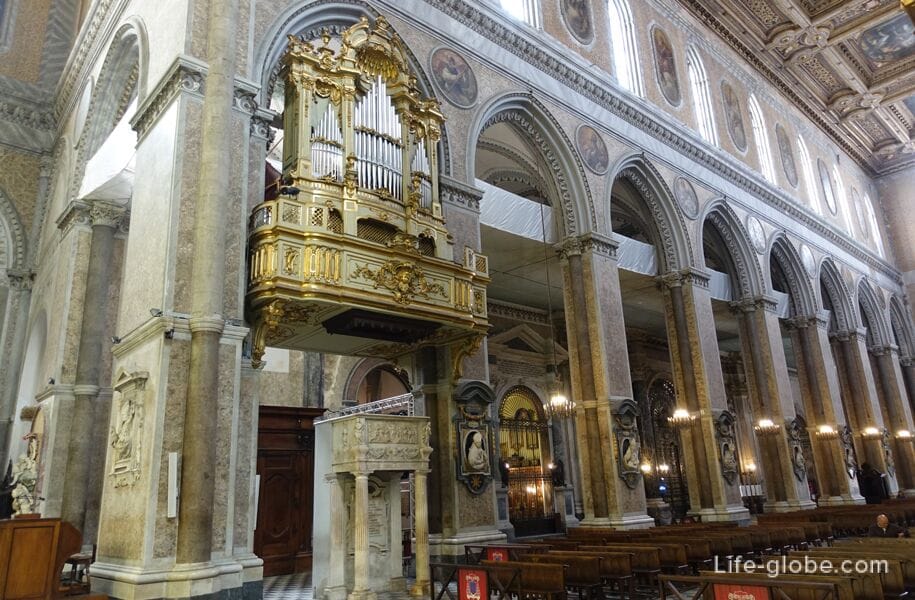

The main attraction of the Cathedral is the Royal chapel "the Treasure of St. Januarius".
In 1526 - 1527 the years, Naples has experienced the siege of the French, the revival of the plague and the eruption of the volcano Vesuvius with its accompanying earthquakes. Survivors Neapolitans vowed to build a chapel to the patron Saint of the city - the Holy Anuario. In 1527, the elected representatives from residents of the city attorney promised a thousand ducats for the tabernacle and 10,000 ducats for the construction of the new chapel. 5 February 1601 the "chosen city" has appointed a Committee of twelve laymen, called "Deputation" to build a new chapel. Work began in 1608, ended in 1646.
The chapel of St. Januarius is the most richly decorated. There are numerous frescoes, the altar and the sculpture, of which there is a bust of St. Januarius of gold and silver, decorated with cloth and jewels.
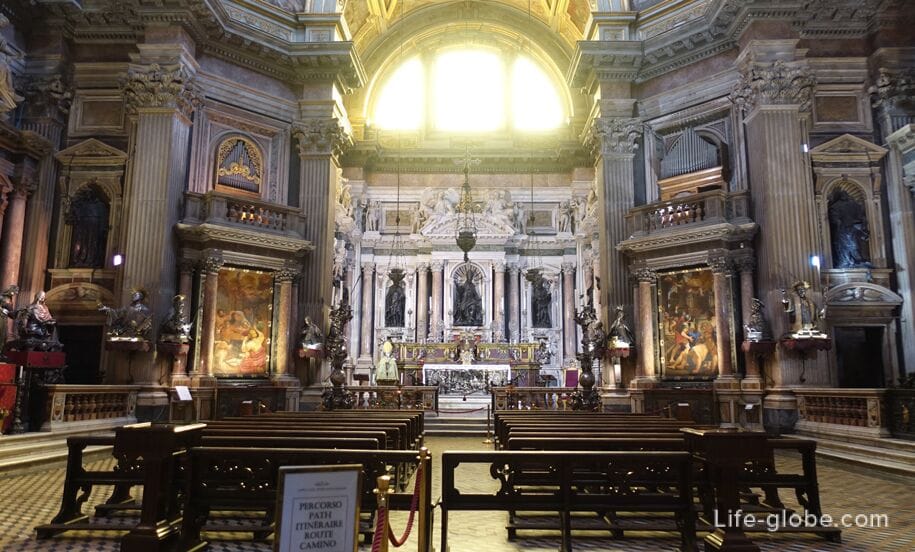
Chapel of a noble Neapolitan family Capece (Cappella dei Capece Minutolo) is in Gothic style with a mosaic floor of the 13th century, funerary sarcophagi branch of Minutolo and frescoes from various periods, depicting scenes of Apostolic stories and history of the Passions.
The oldest wall paintings date back to 1285 - 1290 years, the work of Montano Osetinskogo "Saints Peter and Paul" and "Crucifixion".

The oldest part of the Cathedral - Basilica of Santa Restituta (Santa Restituta Basilica di). The Basilica is early Christian in origin, is the oldest Basilica of Naples, and the former primitive Cathedral Church of the city. The base of the Basilica is attributed to the Emperor Constantine, and dates from the fourth century.
With the construction of the present Cathedral Basilica significantly lost some of its outer facade was reduced in size, becoming in fact a chapel of the new Cathedral.
The Basilica has a main room, divided by arches into three naves and chapels located on the sides of the two outermost aisles.

To the right of the altar of the Basilica of Santa Restituta is the entrance to the oldest surviving part of the structure is the baptismal of St. John (Battistero di San Giovanni in Fonte).
The exact date of construction of the baptistery is still no consensus on estimated time of construction - 4th century, significant changes - 5th century.
In the interior of the baptistery is partly preserved mosaic 4 - 5 centuries. The room is built of small blocks of tuff and consists of two unequal parts.


The crypt of San Gennaro, created by the Lombard Tommaso Malvito.

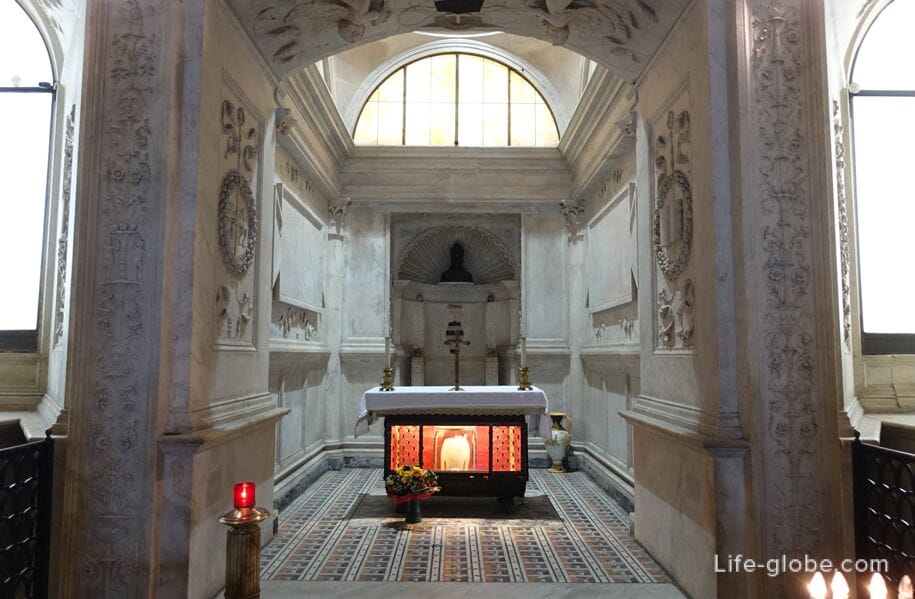
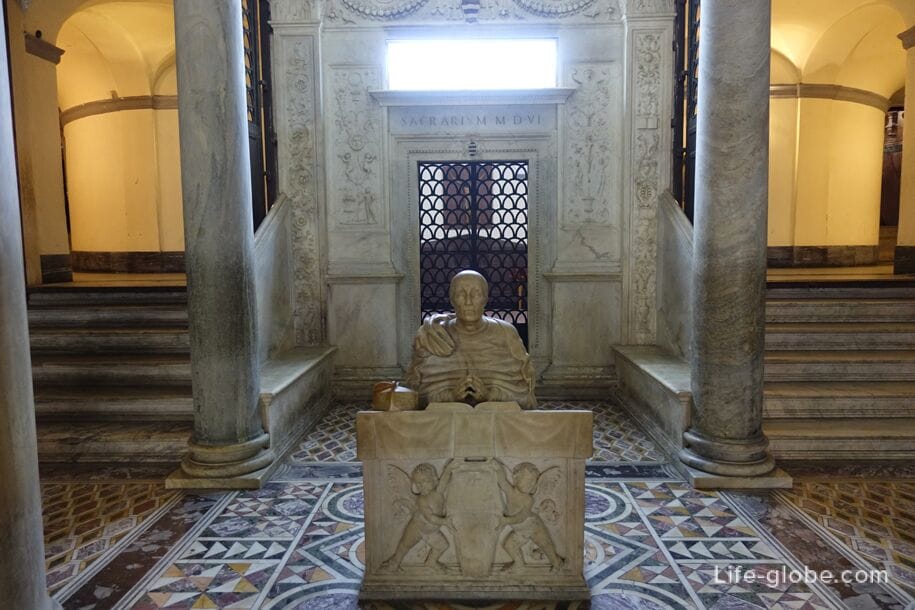
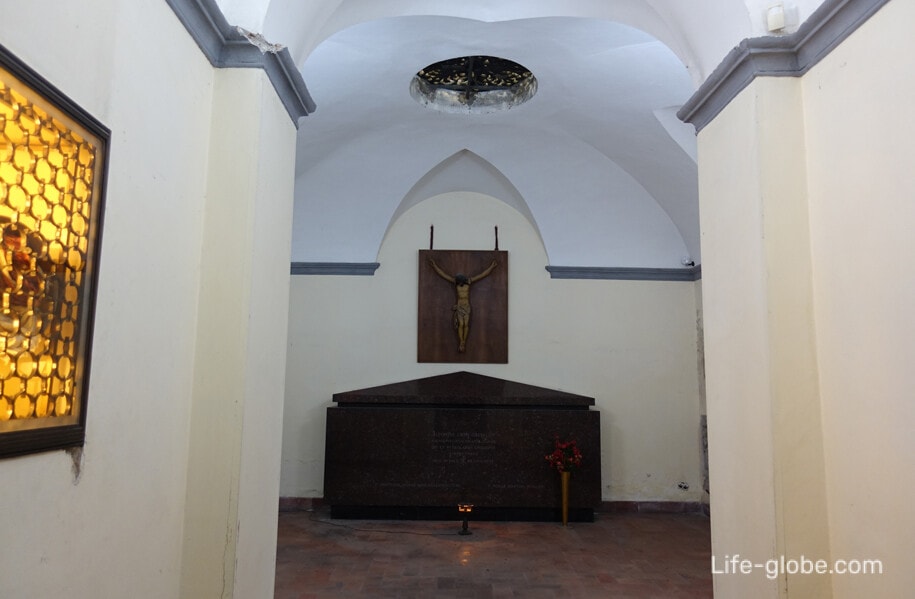
The Cathedral houses the sacred vessel with the blood of St. Januarius, which demonstrates to the parishioners three times a year: on Saturday before the first Sunday of may is the memory of the reunification of the relics of St. Januarius, September 19 - St. Januarius and December 16. In these days dried blood of St. Januarius liquefies, giving a miracle. Legend has it that if the blood is not rasizada in any day, then Naples will suffer disaster.
However, according to the hypothesis, the vial contains a thixotropic gel, a suspension of hydrated iron oxide FeO (OH), which reproduces color and the "behavior of blood" in the vial (the viscosity increases, if not to touch the bottle, and decreases with jerky) that explains the effect of "Miracle blood".
The entrance to the Cathedral free, pay, have, perhaps, for entry into the Baptismal.
On the right side of the main entrance to the Cathedral is the Museum of Treasure of St. Gennaro (Museo del Tesoro di San Gennaro). The entrance ticket costs 6 - 8 Euros. Hours of operation: Monday - Friday 09:00 - 16:30 hours; Saturday, Sunday 09:00 - 17:30 hours.
